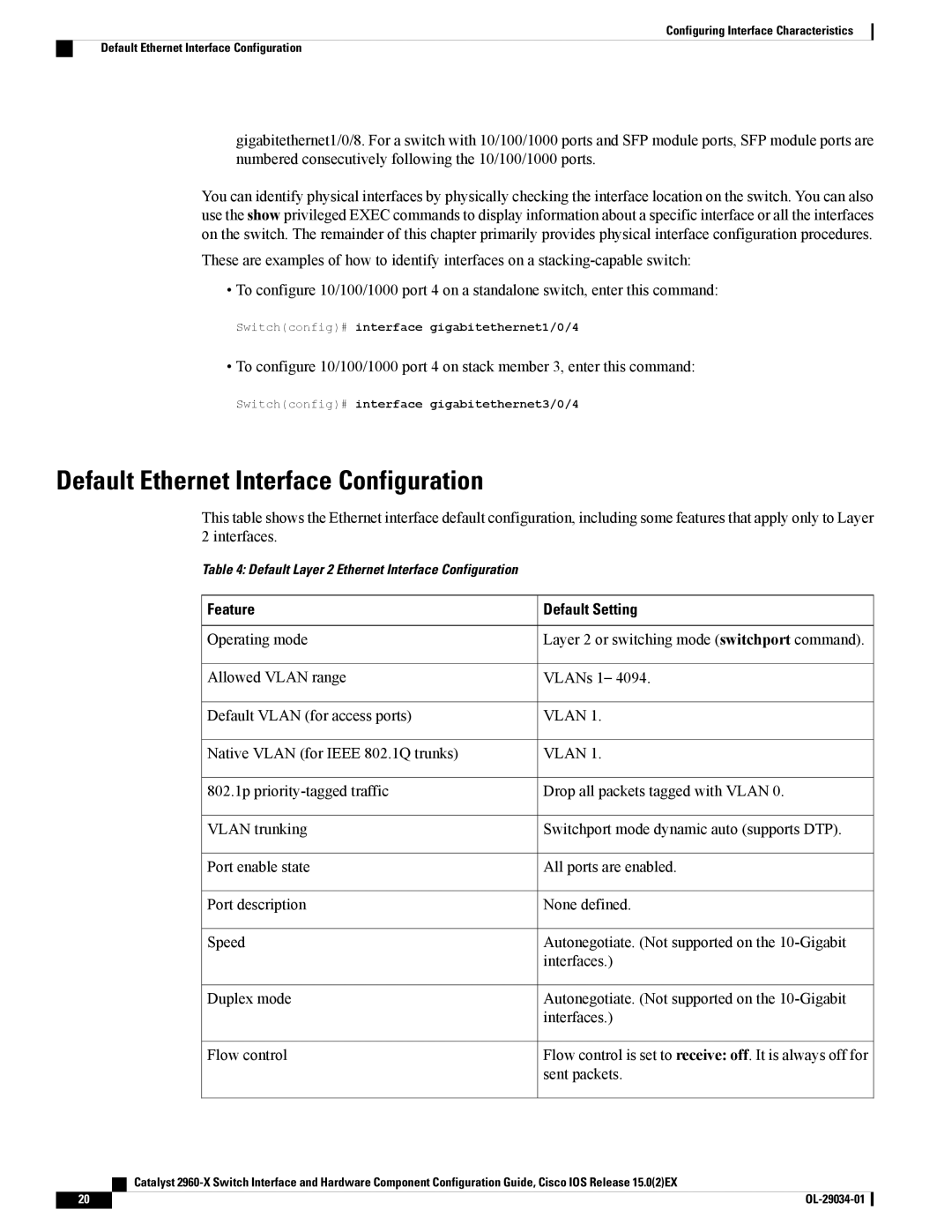
Configuring Interface Characteristics
Default Ethernet Interface Configuration
gigabitethernet1/0/8. For a switch with 10/100/1000 ports and SFP module ports, SFP module ports are numbered consecutively following the 10/100/1000 ports.
You can identify physical interfaces by physically checking the interface location on the switch. You can also use the show privileged EXEC commands to display information about a specific interface or all the interfaces on the switch. The remainder of this chapter primarily provides physical interface configuration procedures.
These are examples of how to identify interfaces on a
•To configure 10/100/1000 port 4 on a standalone switch, enter this command:
Switch(config)# interface gigabitethernet1/0/4
•To configure 10/100/1000 port 4 on stack member 3, enter this command:
Switch(config)# interface gigabitethernet3/0/4
Default Ethernet Interface Configuration
This table shows the Ethernet interface default configuration, including some features that apply only to Layer 2 interfaces.
Table 4: Default Layer 2 Ethernet Interface Configuration
 Feature
Feature
Operating mode
Allowed VLAN range
Default VLAN (for access ports)
Native VLAN (for IEEE 802.1Q trunks)
802.1p
VLAN trunking
Port enable state
Port description
Speed
Duplex mode
Flow control
 Default Setting
Default Setting
Layer 2 or switching mode (switchport command).
VLANs 1– 4094.
VLAN 1.
VLAN 1.
Drop all packets tagged with VLAN 0.
Switchport mode dynamic auto (supports DTP).
All ports are enabled.
None defined.
Autonegotiate. (Not supported on the
Autonegotiate. (Not supported on the
Flow control is set to receive: off. It is always off for sent packets.
| Catalyst |
20 |
|
